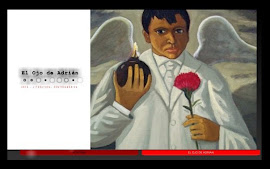
ARTES VISUALES
Adolf Wölfli
SWI, 1864-1930
 Wölfli's imaginary autobiography and one-person utopia starts with “From the Cradle to the Grave“(1908-1912). In 3,000 pages, Wölfli turns his dramatic and miserable childhood into a magnificent travelog. He relates how as a child named Doufi, he travelled “more or less around the entire world,“ accompanied by the “Swiss Hunters and Nature Explorers Travelling Society.“ The narrative is lavishly illustrated with drawings of fictitious maps, portraits, palaces, cellars, churches, kings, queens, snakes, speaking plants.
Wölfli's imaginary autobiography and one-person utopia starts with “From the Cradle to the Grave“(1908-1912). In 3,000 pages, Wölfli turns his dramatic and miserable childhood into a magnificent travelog. He relates how as a child named Doufi, he travelled “more or less around the entire world,“ accompanied by the “Swiss Hunters and Nature Explorers Travelling Society.“ The narrative is lavishly illustrated with drawings of fictitious maps, portraits, palaces, cellars, churches, kings, queens, snakes, speaking plants.
In the second part of the writings, the “Geographic and Algebraic Books“, Wölfli describes how to build the future “Saint Adolf-Giant-Creation“: a huge “capital fortune“ that will allow to purchase, rename, urbanize, and appropriate the planet and finally the entire cosmos. In 1916 this narrative reaches a climax as Wölfli dubs himself St. Adolf II.
In the subsequent „Books with Songs and Dances“ (1917-1922) and “Album Books with Dances and Marches“ (1924-1928), Wölfli celebrates his “Saint Adolf-Giant-Creation“ for thousands of additional pages, in sound poetry, songs, musical scales, drawings, and collages. In 1928 he starts with the “Funeral March,“ the fifth and final part of his great imaginary autobiography. In over 8,000 pages he recapitulates central motifs of his world system in the reduced form of keywords and collages, weaving them into a infinite tapestry of sounds and pictures, a fascinating requiem ending only with his death in 1930.
As a multiple outsider, Wölfli used the world as a quarry for constructing a complex mental edifice complete unto itself. The “Saint Adolf-Giant-Creation“ was both a kind of wish-fulfillment machine and the result of his obstinate reception and reproduction of turn-of-the-century ideas, values and fantasies. Wölfli created a body of work that was part of its age in terms of content, yet clearly alien to that age's conventions.
Jean Dubuffet, the French artist and founder of Art Brut, called Wölfli “le grand Wölfli“; the Surrealist André Breton considered his oeuvre “one of the three of four most important works of the twentieth century“; and the Swiss curator Harald Szeemann showed a number of his pieces in 1972 at “Documenta 5“, the renown contemporary art exhibition in Kassel, Germany. Wölfli's writings, which he considered his actual life's work, only began to be systematically examined and transcribed in 1975 when the Adolf Wölfli Foundation was founded. Elka Spoerri (1924-2002) built up the Adolf Wölfli Foundation and was its curator from 1975 to 1996. Taken from the Adolf Wölfli webpage.







